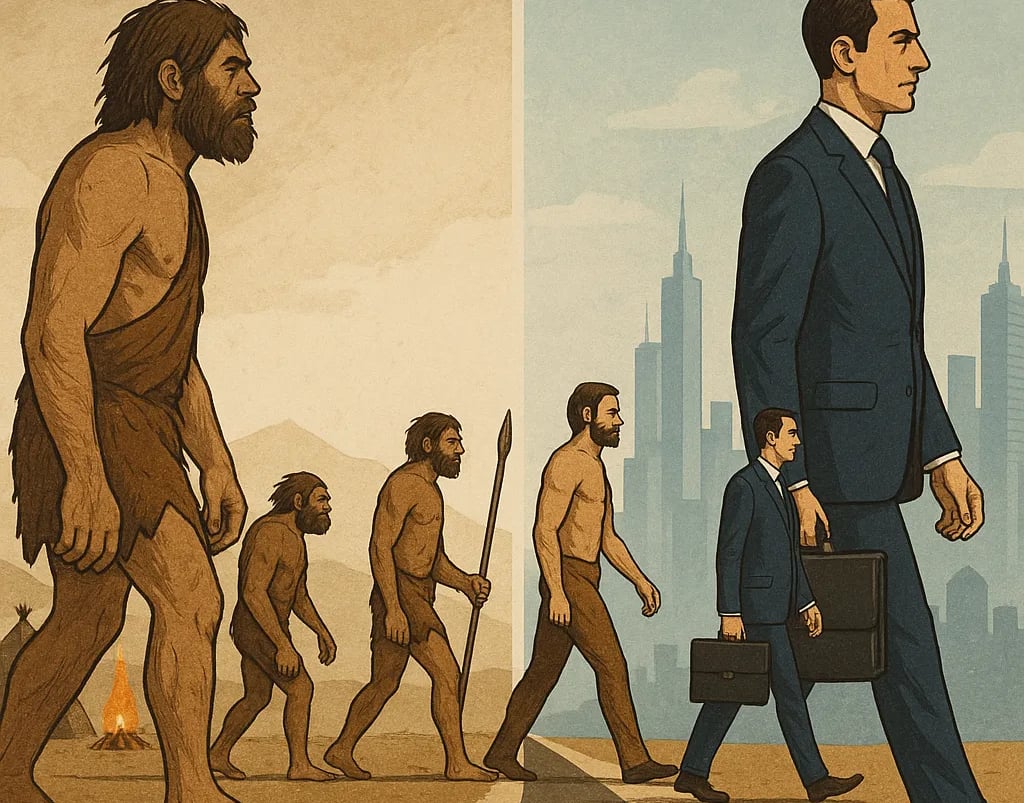What if your data could talk to you? Would it say, “You’re on the right track”? Or maybe, “Hey, pay attention to this trend”?
I just wrote a simple, story-style article explaining how data becomes decisions using the example of a small clothing shop. From understanding the past to predicting the future (and even letting AI think ahead for you), it’s a beginner-friendly breakdown of data analysis. #DataStorytelling # AnalyticsSimplified # BeginnerFriendly
Nazish Khalid
7/22/20253 min read


What Is This Thing Called Data?
Imagine you’re a detective, but instead of solving crimes, you’re solving business mysteries. Your clues? Numbers, facts, and information are scattered everywhere like breadcrumbs in a forest. This is data — simply put, it’s any collection of facts, numbers, or information that can be stored and analysed.
Think of data as the digital footprints we leave behind every day. When you buy coffee with your card, rate a movie online, or even check the weather, you’re creating data. It’s the raw ingredients that, when cooked properly, can serve up insights that change everything.
Why Should You Care About Data?
Picture this: You’re running a lemonade stand, and you notice some days you sell out while other days you barely sell a cup. Without data, you’re just guessing. But with data, you become a business genius.
Data is important because it transforms guesswork into smart decisions. In our data-driven world, companies that use data effectively are like superheroes with x-ray vision — they can see patterns, predict trends, and make decisions that their competitors can only dream about.
Every successful business today is secretly a data detective agency. They use information to understand their customers, improve their products, and stay ahead of the competition.
The Five Types of Data Analysis — Your Detective Toolkit
1. Descriptive Analytics: “What Happened?”
This is like being a historian for your business. Descriptive analytics looks at past events and says, “Here’s what went down.”
Simple Example: A coffee shop owner looks at last month’s sales and discovers they sold 500 lattes, 300 americano, and only 50 decaf coffees. This tells them exactly what happened — lattes were the star, decaf was a flop.
2. Diagnostic Analytics: “Why Did It Happen?”
Now you’re becoming Sherlock Holmes. You know what happened, but why did it happen?
Simple Example: The coffee shop owner digs deeper and finds out those 500 lattes were mostly sold during cold, rainy days, while Americanos were popular during hot afternoons. The “why” emerges — weather affects coffee preferences!
3. Predictive Analytics: “What Will Happen?”
This is where you become a fortune teller (but with math). Predictive analytics uses past patterns to forecast the future.
Simple Example: Based on weather forecasts and historical data, the coffee shop owner predicts that next week’s rainy Tuesday will bring high latte sales, so they order extra milk and syrup. Smart move!
4. Prescriptive Analytics: “What Should We Do?”
You’re now the strategic advisor. This analysis doesn’t just predict — it recommends actions.
Simple Example: The system tells the coffee shop owner: “Rain is coming Tuesday. Based on past data, you should prepare 30% more latte ingredients, offer a ‘Rainy Day Special,’ and have extra staff scheduled from 8–11 AM.”
5. Cognitive Analytics: “What If Things Change?”
This is the most advanced level, like having a crystal ball that adapts and learns. Cognitive analytics can handle complex, changing situations.
Simple Example: The coffee shop’s system notices a new trend — customers are posting about a viral TikTok coffee challenge. It automatically suggests creating a special drink to capitalise on this unexpected social media trend.
The Plot Twist: Your Data Journey Starts Now
Every number in your business is trying to tell you a story. The question is: Are you listening?
Whether you’re running a corner store or a tech startup, data analysis isn’t just for big corporations anymore. It’s your secret weapon for making better decisions, understanding your customers, and building something amazing.
Remember, you don’t need to be a math genius to be a data detective. You just need curiosity, the right tools, and the willingness to let your data tell its story.
The End… Or Is It Just the Beginning?
Your data is sitting there right now, waiting to reveal its secrets. What story will you uncover first?